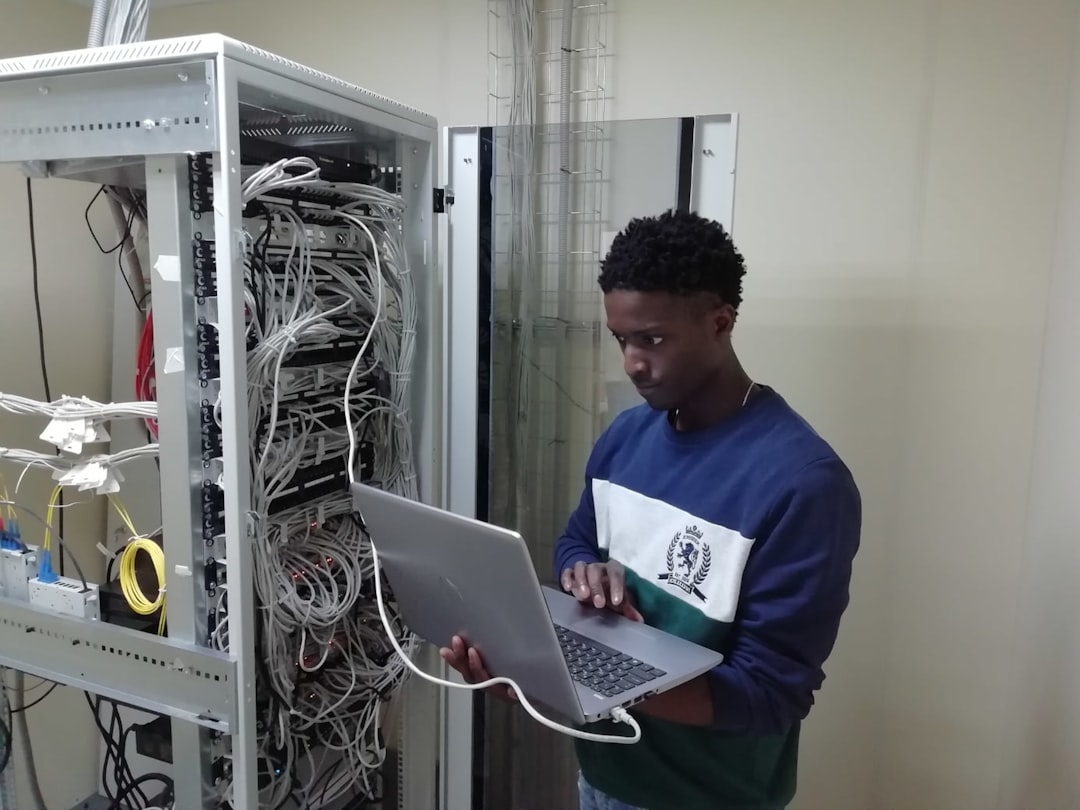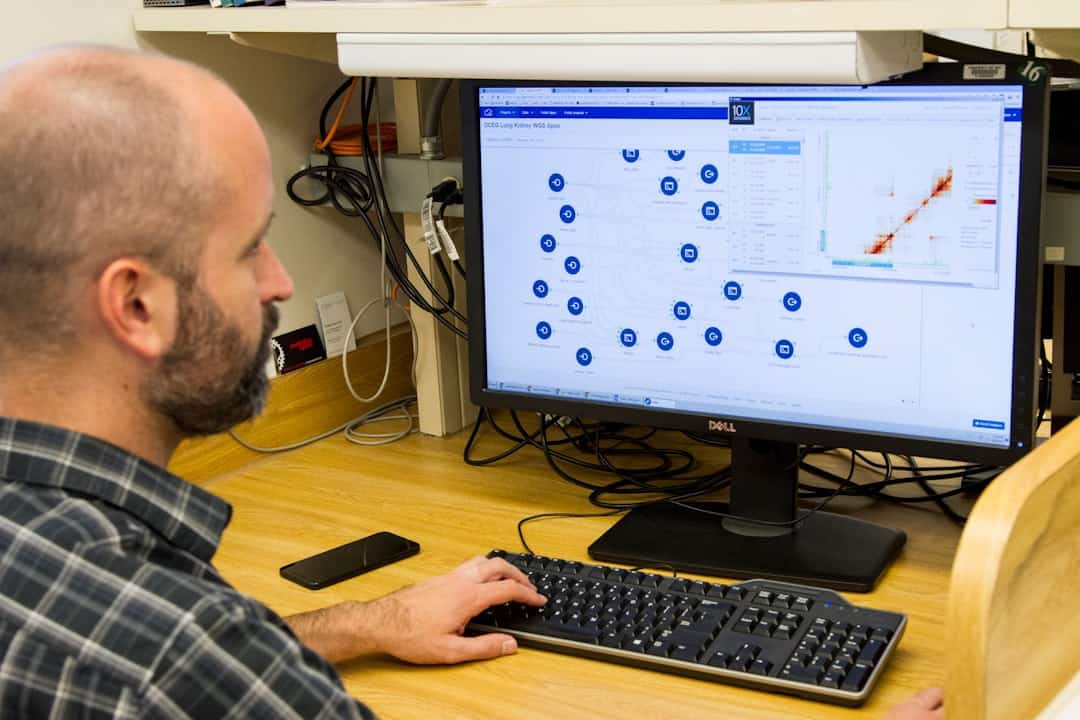Vulnerability scanning is a critical component of modern cybersecurity practices, designed to identify weaknesses within an organization’s systems and networks. This proactive approach allows businesses to detect potential security flaws before they can be exploited by malicious actors. By employing automated tools, organizations can conduct regular scans of their infrastructure, pinpointing vulnerabilities in software, hardware, and configurations.
The process typically involves the use of specialized software that systematically probes systems for known vulnerabilities, providing a comprehensive overview of potential risks. The significance of vulnerability scanning cannot be overstated. In an era where cyber threats are increasingly sophisticated and prevalent, organizations must remain vigilant in their defense strategies.
Regular vulnerability assessments not only help in identifying existing weaknesses but also in understanding the evolving threat landscape. By keeping abreast of the latest vulnerabilities and exploits, organizations can prioritize their remediation efforts effectively, ensuring that critical assets are protected agAInst emerging threats. This ongoing vigilance is essential for maintaining a robust cybersecurity posture.
Key Takeaways
- Vulnerability scanning helps identify weaknesses in a system or network that could be exploited by attackers.
- Risk assessment is crucial for understanding potential threats and their impact on an organization’s security posture.
- Compliance management is important for ensuring that an organization meets regulatory requirements and industry standards.
- Rapid7 InsightVM provides comprehensive visibility and analytics for effective cybersecurity management.
- Integrating vulnerability scanning and risk assessment into cybersecurity strategy is essential for proactive security measures.
Implementing Risk Assessment
Risk assessment is an integral part of any cybersecurity framework, serving as the foundation for informed decision-making regarding security measures. This process involves identifying potential risks to an organization’s assets, evaluating the likelihood of those risks materializing, and determining the potential impact on the organization. By systematically analyzing these factors, organizations can develop a comprehensive understanding of their risk landscape and prioritize their security initiatives accordingly.
Implementing a risk assessment framework requires a structured approach. Organizations often begin by cataloging their assets, including hardware, software, and data. Once these assets are identified, potential threats and vulnerabilities are assessed to determine the level of risk associated with each asset.
This analysis enables organizations to allocate resources effectively, focusing on high-risk areas that require immediate attention. Furthermore, risk assessments should be conducted regularly to account for changes in the environment, such as new technologies or evolving threat vectors. By continuously refining their risk assessment processes, organizations can enhance their overall security posture and resilience against cyber threats.
Importance of Compliance Management

Compliance management is a vital aspect of cybersecurity that ensures organizations adhere to relevant laws, regulations, and industry standards. With the increasing number of data protection regulations—such as GDPR, HIPAA, and PCI DSS—organizations must navigate a complex landscape of compliance requirements. Failure to comply can result in severe penalties, reputational damage, and loss of customer trust.
Therefore, effective compliance management is essential for safeguarding both organizational assets and customer data. The importance of compliance management extends beyond mere adherence to regulations; it also fosters a culture of security within the organization. By establishing clear policies and procedures that align with compliance requirements, organizations can promote awareness and accountability among employees.
This proactive approach not only mitigates risks associated with non-compliance but also enhances overall security practices. Moreover, compliance management can serve as a competitive advantage, as customers increasingly seek out organizations that prioritize data protection and privacy.
Leveraging Rapid7 InsightVM for Cybersecurity
| Metrics | Data |
|---|---|
| Vulnerability Assessment Coverage | 95% |
| Number of Assets Scanned | 1000 |
| Number of Critical Vulnerabilities Detected | 50 |
| Remediation Rate | 80% |
Rapid7 InsightVM is a powerful vulnerability management solution that empowers organizations to identify and remediate vulnerabilities across their IT environments effectively. With its user-friendly interface and robust features, InsightVM provides real-time visibility into an organization’s security posture. The platform enables users to conduct comprehensive vulnerability scans, assess risk levels, and prioritize remediation efforts based on potential impact.
One of the standout features of InsightVM is its ability to integrate seamlessly with existing security tools and workflows. This integration allows organizations to streamline their vulnerability management processes and enhance collaboration among security teams. Additionally, InsightVM offers advanced analytics capabilities that provide actionable insights into vulnerabilities and threats.
By leveraging these insights, organizations can make informed decisions about their security strategies and allocate resources more effectively. Ultimately, Rapid7 InsightVM serves as a critical ally in the ongoing battle against cyber threats.
Integrating Vulnerability Scanning into Cybersecurity Strategy
Integrating vulnerability scanning into an organization’s cybersecurity strategy is essential for maintaining a proactive defense posture. By embedding regular scanning into the overall security framework, organizations can ensure that vulnerabilities are identified and addressed promptly. This integration not only enhances the effectiveness of vulnerability management efforts but also fosters a culture of continuous improvement within the organization.
To successfully integrate vulnerability scanning into a cybersecurity strategy, organizations should establish clear policies and procedures governing the scanning process. This includes defining the frequency of scans, determining which systems will be scanned, and outlining the roles and responsibilities of team members involved in the process. Additionally, organizations should leverage automation to streamline scanning efforts and reduce the burden on security teams.
By automating routine scans and reporting processes, organizations can focus their resources on more strategic initiatives while ensuring that vulnerabilities are consistently monitored and addressed.
Utilizing Risk Assessment for Proactive Security Measures

Prioritizing Vulnerabilities
A key aspect of utilizing risk assessment is the ability to prioritize vulnerabilities based on their potential impact on the organization. By categorizing risks according to severity and likelihood, organizations can focus their remediation efforts on high-priority vulnerabilities that pose the greatest threat.
Regular Re-evaluation
Risk assessments should be revisited regularly to account for changes in the threat landscape or organizational structure. This ongoing evaluation ensures that security measures remain relevant and effective in addressing current risks.
Staying Ahead of Emerging Threats
By adopting a proactive approach to risk assessment, organizations can stay ahead of emerging threats and mitigate risks effectively. This enables them to respond quickly to new threats and minimize the potential impact on their operations.
Streamlining Compliance Management with Rapid7 InsightVM
Rapid7 InsightVM not only excels in vulnerability management but also plays a pivotal role in streamlining compliance management processes. The platform provides organizations with the tools necessary to assess their compliance posture against various regulatory frameworks effectively. By automating compliance checks and generating detailed reports, InsightVM simplifies the often complex task of maintaining compliance with industry standards.
The integration of compliance management within InsightVM allows organizations to track their progress toward meeting regulatory requirements in real time. Users can easily identify areas where compliance gaps exist and take corrective actions promptly. Furthermore, InsightVM’s reporting capabilities enable organizations to demonstrate compliance to auditors and stakeholders efficiently.
By leveraging Rapid7 InsightVM for compliance management, organizations can reduce the administrative burden associated with compliance efforts while enhancing their overall security posture.
Best Practices for Maximizing Cybersecurity with Rapid7 InsightVM
To maximize cybersecurity efforts using Rapid7 InsightVM, organizations should adopt several best practices that enhance the effectiveness of their vulnerability management processes.
Organizations should schedule scans at appropriate intervals based on their risk profile and operational needs to ensure continuous monitoring of vulnerabilities.
Additionally, fostering collaboration between security teams and other departments is essential for effective vulnerability management. By involving stakeholders from various areas of the organization—such as IT operations, development teams, and compliance officers—organizations can create a holistic approach to cybersecurity that addresses vulnerabilities from multiple angles. Furthermore, leveraging InsightVM’s reporting features can facilitate communication about vulnerabilities across teams, ensuring that everyone is aligned on remediation efforts.
Finally, organizations should prioritize ongoing training and education for their staff regarding cybersecurity best practices and emerging threats. By cultivating a culture of security awareness within the organization, employees become active participants in safeguarding sensitive information and systems.
In conclusion, understanding vulnerability scanning, implementing risk assessments, managing compliance effectively, leveraging tools like Rapid7 InsightVM, integrating these practices into a cohesive strategy, utilizing proactive measures, streamlining processes, and adhering to best practices are all essential components of a robust cybersecurity framework. As cyber threats continue to evolve, organizations must remain vigilant in their efforts to protect their assets and maintain trust with customers through effective cybersecurity practices.
For those interested in cybersecurity and vulnerability management, a related topic is the future of digital environments, such as the metaverse, and their implications on cybersecurity. An insightful article that discusses potential challenges and developments in digital realms like the metaverse, which could be relevant to understanding broader cybersecurity concerns, is available at Metaversum. You can read more about these perspectives and their impact on cybersecurity frameworks by visiting Why Will the Metaverse Die?. This article explores various factors that could influence the longevity and security of virtual spaces, which is crucial for professionals involved in fields like vulnerability scanning and compliance management.
FAQs
What is Rapid7 InsightVM?
Rapid7 InsightVM is a cybersecurity solution that provides vulnerability management, vulnerability scanning, risk assessment, and compliance management capabilities. It helps organizations identify and prioritize security vulnerabilities in their IT environment.
What are the key features of Rapid7 InsightVM?
Rapid7 InsightVM offers features such as continuous vulnerability assessment, asset discovery and inventory, risk scoring and prioritization, remediation tracking, compliance checks, and integration with other security tools.
How does Rapid7 InsightVM help with cybersecurity?
Rapid7 InsightVM helps organizations improve their cybersecurity posture by identifying and prioritizing vulnerabilities in their IT infrastructure, providing insights into potential risks, and enabling efficient remediation efforts to mitigate security threats.
What is vulnerability scanning?
Vulnerability scanning is the process of identifying and assessing security vulnerabilities in a computer system, network, or application. It involves using automated tools to scan for known vulnerabilities and misconfigurations.
How does Rapid7 InsightVM perform vulnerability scanning?
Rapid7 InsightVM performs vulnerability scanning by using a combination of active and passive scanning techniques to identify vulnerabilities in IT assets. It leverages a database of known vulnerabilities and security checks to assess the risk level of each identified vulnerability.
What is risk assessment in the context of cybersecurity?
Risk assessment in cybersecurity involves evaluating the potential impact and likelihood of security threats and vulnerabilities to determine the level of risk they pose to an organization’s IT environment.
How does Rapid7 InsightVM conduct risk assessment?
Rapid7 InsightVM conducts risk assessment by assigning risk scores to identified vulnerabilities based on their severity, potential impact, and exploitability. It helps organizations prioritize remediation efforts based on the level of risk posed by each vulnerability.
What is compliance management in cybersecurity?
Compliance management in cybersecurity refers to the process of ensuring that an organization’s IT infrastructure and security practices align with relevant industry regulations, standards, and best practices.
How does Rapid7 InsightVM support compliance management?
Rapid7 InsightVM supports compliance management by providing pre-built compliance checks and templates for various regulatory frameworks, such as PCI DSS, HIPAA, and CIS benchmarks. It helps organizations assess their compliance posture and track remediation efforts to meet regulatory requirements.











Leave a Reply